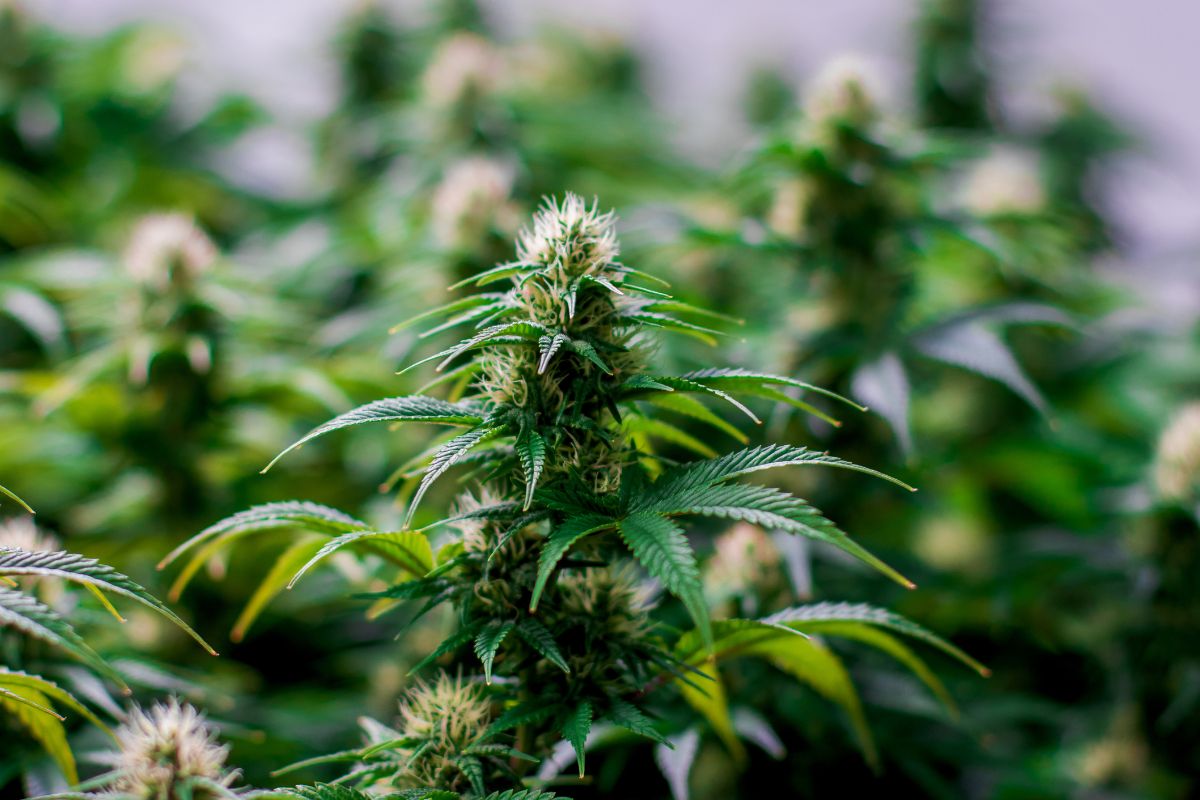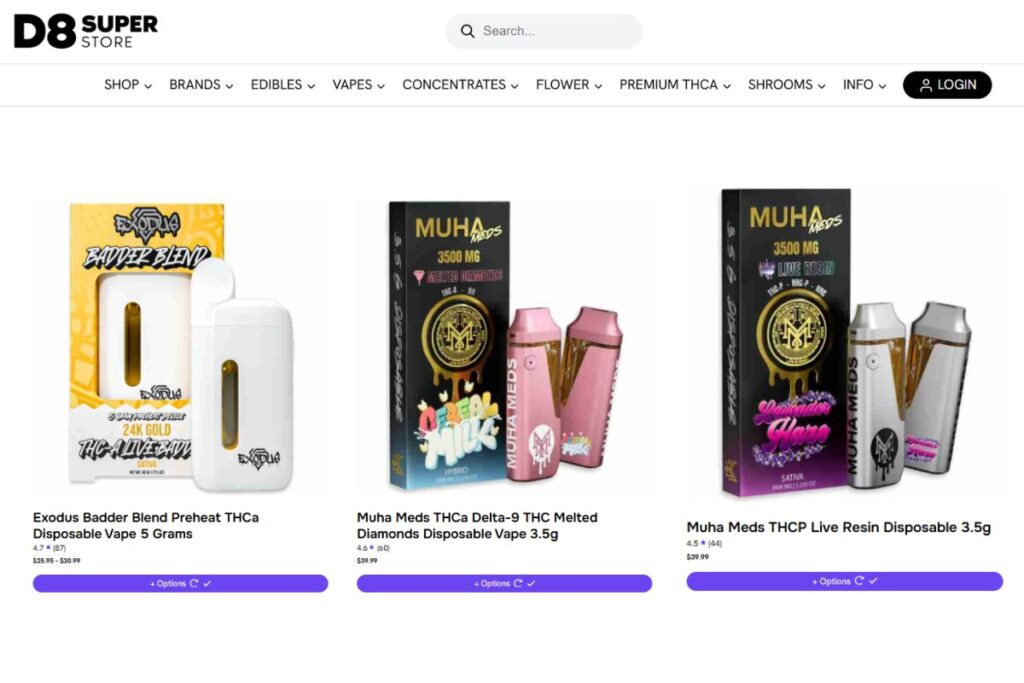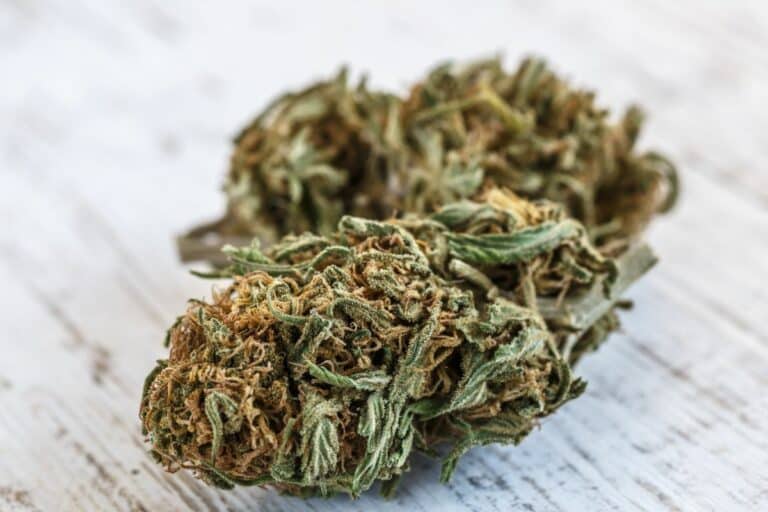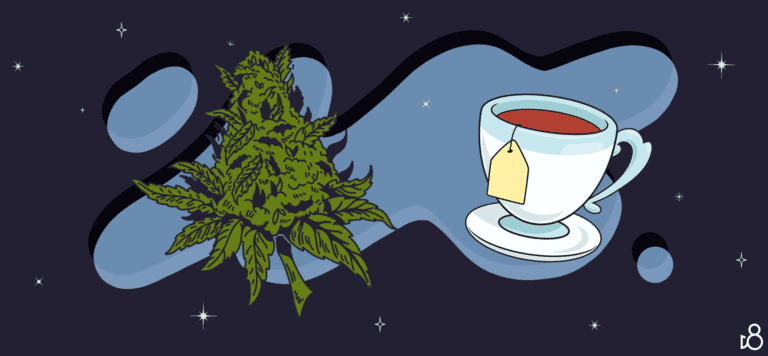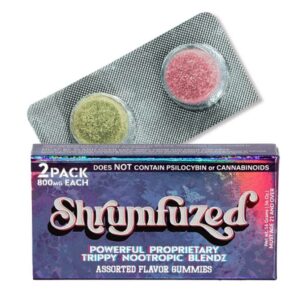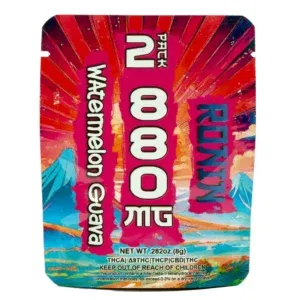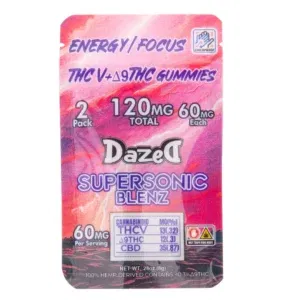THC vs TAC: Understanding the Key Differences and Importance
If you’re just stepping into the world of cannabis, let’s break things down for you — starting with THC and Total Active Cannabinoids (TAC), two key terms you’ll hear a lot.
Experienced cannabis users already know that TAC and THC revolve around cannabinoids, the natural compounds in cannabis that interact with your body in different ways. However, for a newbie, given the growing popularity of cannabis, understanding these compounds won’t only be helpful to you, but essential as well.
Table of contents
So, what exactly are THC and TAC, and what sets them apart? Let’s dive in and clear things up.
THC vs TAC

THC: The Primary Psychoactive Cannabinoid
THC is delta-9-tetrahydrocannabinol, the main psychoactive ingredient in the cannabis plant. It’s what makes you feel “high” when you smoke marijuana or eat an edible.
Marijuana and other THC products are considered Schedule 1 controlled substances by the U.S. Drug Enforcement Agency (DEA). This means that the DEA considers them to have a high likelihood of being abused, despite marijuana being legal in some cities and states, including for medical purposes.
In the United States, as of March 2025, 24 states, two territories, and the District of Columbia have legalized small amounts of cannabis for adult recreational use. Additionally, 39 states permit medical use of cannabis with a medical recommendation.
However, despite these legalities cannabis enjoys, users are still warned while using them because the effects when THC interacts with the body vary depending on the method of consumption, dosage, and individual factors.
Short-term effects of THC have been reported to include altered senses, mood changes, impaired body movement, difficulty with thinking and problem-solving, and memory issues.
On the other hand, long-term or heavy use of THC has been associated with respiratory issues, potential mental health problems such as anxiety or depression, and, in some cases, cannabinoid hyperemesis syndrome (CHS), which leads to severe nausea and vomiting.
TAC: Total Active Cannabinoids
Total Active Cannabinoids (TAC) is a number on the back or cannabis label of a product that shows you the combined amount of all the cannabinoids in that product.
This includes THC content (which causes the “high”), CBD (known for its calming effects), CBN (which may help with sleep), and other cannabinoids. TAC, which is found on the cannabis label, helps give a clearer picture of what’s inside the product and how it might affect you.
Knowing the TAC of a product is important when choosing a cannabis product to buy. For instance, a higher TAC would normally mean the product has more active compounds, which could make the effects stronger or longer-lasting.
At this juncture, it’s important to note as well that when examining cannabis product labels, many users frequently see the percentage of just THC, not TAC as well which covers all the acidic cannabinoids present in the product.
This is why new users are always advised to only use labels that include both THC and TAC percentages because having both pieces of information will help you better anticipate the product’s effects and therapeutic potential.
For instance, a product with a high TAC but moderate THC levels may offer substantial therapeutic benefits without intense psychoactive effects, making it suitable if you just need relief from a particular symptom without getting intoxicated.
The Entourage Effect and TAC
| Feature | The Entourage Effect | TAC (Total Active Cannabinoids) | THC (Tetrahydrocannabinol) |
|---|---|---|---|
| Definition | Synergistic interaction of cannabinoids, terpenes, and flavonoids for enhanced effects. | The total concentration of all active cannabinoids in a cannabis product. | The primary psychoactive compound in cannabis responsible for the “high.” |
| Key Components | THC, CBD, CBG, CBN, terpenes, flavonoids. | THC, CBD, CBG, CBN, CBC, and other cannabinoids. | Only THC. |
| Effects | Enhances therapeutic benefits, improves absorption, and balances psychoactivity. | Determines the overall potency and medicinal value of cannabis. | Produces psychoactive effects, euphoria, and relaxation. |
| Medical Benefits | More effective for pain, anxiety, and inflammation due to synergy. | Helps gauge the full medicinal potential of a strain. | Effective for pain relief, appetite stimulation, and nausea reduction. |
| Psychoactivity | Balanced—other compounds can modulate THC’s effects. | Depends on cannabinoid composition. | Strong psychoactive effects. |
| Best For | Users seeking holistic, full-spectrum effects. | Patients needing broad cannabinoid benefits. | Recreational users and those needing strong THC effects. |
What is the Entourage Effect?
The entourage effect is simple: It is a theory suggesting that the various compounds in a cannabis plant, such as the different cannabinoids and terpenes, work together synergistically to produce effects that are more significant or different than when these compounds are used individually.
What we mean by this is that cannabinoids like THC and CBD are well-known for their individual effects, however, cannabis also contains terpenes which are aromatic compounds responsible for the plant’s distinct smell.
The entourage effect proposes that these terpenes can influence how cannabinoids interact with our body’s receptors, potentially enhancing benefits like pain relief or reducing side effects such as anxiety.
Currently, there are some studies and anecdotal evidence that support the existence of the entourage effect, however, research is still ongoing, and more clinical trials are needed to fully understand how these compounds in cannabis interact within the human body and can provide potential health benefits.
How TAC Influences the Entourage Effect

Total Active Cannabinoids (TAC) measures the combined percentage of all the active cannabinoids present in a cannabis product, including THC content, CBD, CBG, and other cannabinoids.
This comprehensive measurement gives you a clearer understanding of a cannabis product’s potency, cannabinoid content and potential psychoactive effects/therapeutic benefits.
So say a product has a high Total Active Cannabinoids percentage, that means there’s a richer mix of active cannabinoids present, which can in turn enhance the entourage effect i.e. the interplay between cannabinoids like THC, CBD, CBG, terpenes, and other cannabinoids.
In short form, the higher the TAC percentage of a product is, the higher the interplay between cannabinoids in it, and vice versa.
THC vs TAC: Choosing the Right Cannabis Strains and Products
When choosing cannabis products, it’s important to consider several factors to ensure you get the desired effects and benefits from your chosen cannabis strains. Let’s look at some of these factors:
Understand TAC and THC Percentages
As previously mentioned, these will be necessary to know because of the indications attached to each percentage you come across.
A THC percentage indicates the level of psychoactive effects you can expect from using the product while a TAC percentage suggests the broader range of cannabinoids in the product, which can combine to offer you comprehensive therapeutic benefits.
Seek a Balanced Cannabinoid Profile
When choosing a cannabis product for use, make sure you find a product that contains a mix of cannabinoids, like THC and CBD, for a more balanced experience.
Unlike THC, CBD is known to counteract some of the psychoactive effects of THC, potentially reducing anxiety or paranoia. This balance can enhance the therapeutic effects or pain relief you feel, making it suitable for medicinal or recreational use.
Consider Terpene and Flavonoid Content
Terpenes are aromatic compounds that give cannabis its distinct smell and flavor, while flavonoids contribute to the plant’s color and also have therapeutic properties.
Both play a role in the “entourage effect,” where the combination of cannabinoids, terpenes, and flavonoids in cannabis work together synergistically to enhance the overall effects of the product. For example, certain terpenes can influence mood or stress levels, adding another layer to the cannabis experience.
So when you’re picking a cannabis product off the shelf, choose one that guarantees a rich profile of these compounds to experience their combined effects fully.
Standardizing TAC Testing
| Aspect | Description |
|---|---|
| Definition | TAC testing measures the total concentration of active cannabinoids in a cannabis product. |
| Key Cannabinoids Measured | THC, CBD, CBG, CBN, CBC, THCV, and other minor cannabinoids. |
| Testing Methods | High-Performance Liquid Chromatography (HPLC), Gas Chromatography (GC), and Mass Spectrometry (MS). |
| Purpose | Ensures accurate labeling, potency verification, and compliance with regulations. |
| Regulatory Standards | Varies by region; must comply with local cannabis testing laws and quality control guidelines. |
| Challenges | Variability in testing methods, lab discrepancies, and degradation of cannabinoids over time. |
| Importance | Helps consumers and medical patients choose products based on potency and effects. |
| Ideal TAC Range | Depends on the product type—flower (10-30%), concentrates (50-90%), edibles (dose-dependent). |
Standardizing Total Active Cannabinoids (TAC) testing is a strategy that territories legalizing THC have to execute because it will ensure that cannabis product labels accurately reflect their cannabinoid content.
We now know that TAC represents the combined concentration of all active cannabinoids in a product, providing consumers with a clear understanding of its potency. However, without standardized testing methods beforehand, inconsistencies can arise, leading to inaccurate labeling that misinforms consumers about the product’s strength and effects.
As such, implementing standardized TAC testing will help establish a common framework for interpreting cannabinoid content across different products.
This uniformity will help consumers make informed decisions based on consistent information, fostering trust in the cannabis industry, and it will aid regulators and healthcare professionals in understanding and predicting the potential effects of various products, as consistent labeling provides reliable data on cannabinoid concentrations.
Conclusion
So, when choosing a cannabis product, it’s essential to consider both its TAC and THC percentages, not just THC. You know what those are now so be sure to make informed decisions whenever you go shopping.
A higher THC percentage may indicate stronger psychoactive effects, but the presence of other cannabinoids reflected in the TAC can modulate these effects. For instance, CBD which is a well known cannabinoid used to counteract some of THC’s psychoactive properties, can lead to a more balanced experience and potential therapeutic benefits.
Additionally, remember that individual responses to cannabinoids can vary based on factors like tolerance, metabolism, and personal sensitivity.
So, it’s advisable to start with products that have lower TAC and THC percentages, especially if you’re new to cannabis or trying a new product, and you can gradually adjust as you become more familiar with how these cannabinoids affect you.

